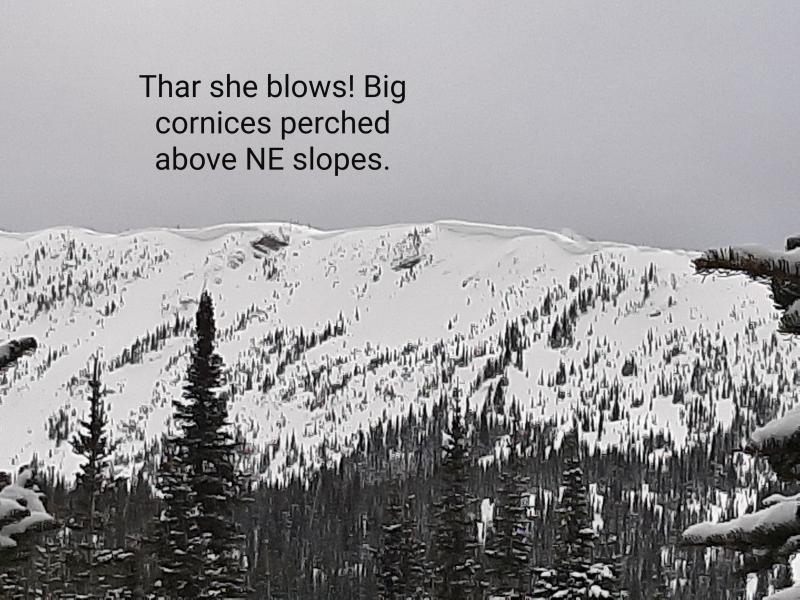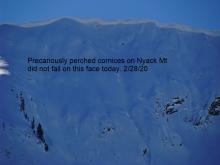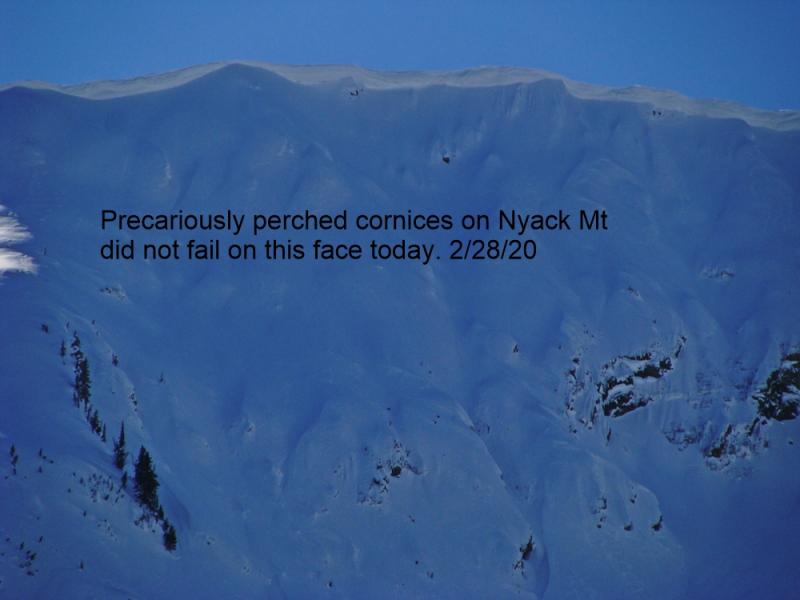| Saturday | Saturday Night | Sunday | |
|---|---|---|---|
| Cloud Cover: | Sunny, then increasing clouds in the afternoon. | Partly cloudy. | Partly cloudy, warm. |
| Temperatures: | 49-61 deg. F. | 32-38 deg. F. | 47-60 deg. F. |
| Wind Direction: | SW | W-SW | W-SW |
| Wind Speed: | 10-11 gusts 24-25 | 11-12 gusts 25-29 | 5-8 |
| Snowfall: | 0 in. | 0 in. | 0 in. |
| Snow Line: |
Whitefish Range
Swan Range
Flathead Range and Glacier National Park
How to read the forecast
Warm temperatures, sunshine, and wet avalanches will continue today. The potential for human triggered and natural loose, wet avalanches, as well as avalanches triggered by cornice fall will increase as the day progresses and dangerous conditions develop. In the upper elevations pay attention to recent wind slabs that may be weakened by the warm temperatures. The avalanche danger is CONSIDERABLE above 5000 feet and MODERATE below 5000 feet.

3. Considerable
?
Above 6500 ft.
3. Considerable
?
5000-6500 ft.
2. Moderate
?
3500-5000 ft.
- 1. Low
- 2. Moderate
- 3. Considerable
- 4. High
- 5. Extreme
-
Type ?
-
Aspect/Elevation ?
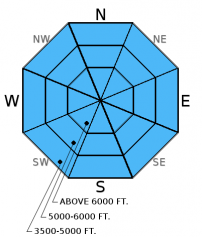
-
Likelihood ?CertainVery LikelyLikelyPossible
 Unlikely
Unlikely -
Size ?HistoricVery LargeLargeSmall

Yesterday’s warm temperatures followed by a relatively warm night will allow the snow surface to moisten early today. Today temperatures are expected to climb slightly higher than yesterday. There is some uncertainty in the timing of potential cloud build-up in the area that may keep afternoon highs slightly cooler. If clouds move in earlier than expected there is a chance for light rain showers to further weaken the suface snow. With the spring sun higher in the sky and temperatures warming well above freezing, this problem will not be simply confined to sunny slopes. Thursday, a skier easily triggered a wet, loose avalanche at about 5500 feet on a northerly aspect. The first signs of wet snow instability are rollerballs and pinwheels developing on a slope. When the snow surface becomes moist make conservative terrain choices like avoiding run-out zones and sticking to lower angle slopes.
Without a re-freeze overnight and water continuing to percolate through the snowpack and weaken deeper weak layers the potential also exists to see wet slab activity.
-
Type ?
-
Aspect/Elevation ?
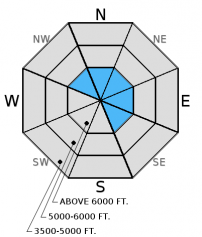
-
Likelihood ?CertainVery LikelyLikelyPossible
 Unlikely
Unlikely -
Size ?HistoricVery LargeLargeSmall

Massive cornices that formed throughout the winter have grown even larger during recent storms. Warm temperatures and recent sunshine weakened these unsupported beasts. Yesterday a cornice fall on Nyack Mountain in the Flathead Range triggered a deeper slab and the resulting avalanche triggered another slab lower on the mountain (observation). Aside from the overhead danger of these giant blocks of snow, they are capable of triggering deep weak layers that would otherwise remain dormant in the snowpack as illustrated by this avalanche yesterday. Cornices can pull far back from behind the ridge line making it important to keep an exaggerated distance away from the edge when traveling above cornices. Even small, scrubby trees are not an adequate indication that you are far enough back.
Also, we observed glide cracks on numerous slopes throughout the advisory area (image) and several have even failed. Whitefish Mountain Resort Ski Patrol reported glide cracks that were widening on Thursday. Glide avalanches are very difficult to predict, so the best strategy is to avoid playing on slopes where glide cracks exist. Today's above normal temperatures and abundant sunshine could cause glide cracks to release as avalanches.
-
Type ?
-
Aspect/Elevation ?

-
Likelihood ?CertainVery LikelyLikelyPossible
 Unlikely
Unlikely -
Size ?HistoricVery LargeLargeSmall

Southwest winds earlier in the week, and then east-northeast winds mid week, formed both hard and soft wind slabs. On Tuesday, we observed two small natural wind slab avalanches on a northeast aspect that likely occurred on Monday on Nyack Peak in the Flathead Range. We also observed large plumes of snow blowing off the highest ridges by strong northeast winds loading aspects on the south half of the compass. Especially in the upper elevations pay attention to obvious signs of instability like recent avalanches or cracks shooting out from your skis or machine, and assess each slope before committing to it. Above freezing temperatures and plenty of sunshine could make wind slabs more sensitive to human triggering today.
Additional concern: You may find weak snow surrounding a series of melt-freeze and rain crusts from late February and March located 1.5 to 3 feet from the surface. These layers have not produced recent avalanches. However, digging into the snow and performing stability tests is the only way to determine if deeper weak layers exist.
The avalanche observation from Nyack Mountain is interesting as it brings together two out of three of the potential problems today. (cornice and wind slab) It also illustrates the size of avalanche that is possible during these rapidly warming conditions.
Friday: Skiers in the Cascadilla Drainage in the Flathead Range reported a large natural avalanche thought to have been triggered by cornice fall (observation). Skiers outside of the advisory in the St. Mary area of Glacier National Park reported multiple natural, loose, wet avalanches on sun exposed slopes that began at about 10:30 am.
Thursday: A skier on Glacier View Mountain in the Whitefish Range intentionally triggered a wet, loose avalanche on a north aspect at 5400 feet (observation). Whitefish Mountain Resort Ski Patrol reported skier triggered loose, wet avalanche (photo) and widening glide cracks. Erich and I observed a softening snow surface on most aspects despite cloud cover in China Basin and Werner Peak in the Whitefish Range yesterday. We did not observe any avalanche activity by mid to late afternoon (observation).
Tuesday: We found 8-10 inches of snow above the melt-freeze crust from 3/25 in the Skyland area in the Flathead Range. We observed substantial wind loading from north-northeast winds along the ridges of the highest peaks. We also observed two recent natural avalanches on a northeast aspect of Nyack Mountain that likely occurred Monday 3/28 (observation). Skiers in the Wahoo/Rescue Creek area of the Flathead Range noted recent small wind slab avalanches (same ones we observed?) on north aspects along with point release activity from the previous few days (observation).
Visit our Observations page and our You Tube channel for more observations from the entire season.
Thanks to everyone for submitting observations. They are extremely useful and could help save lives.
HOW TO SUBMIT OBSERVATIONS:
Email: [email protected]
Call and leave a message: 406.387.3821
You can also submit quick observations via text: 406.241.4571 (FAC mobile)
OR
Submit Snowpack Observations: http://www.flatheadavalanche.org/node/add/snowobs
Submit Avalanche Observations: http://www.flatheadavalanche.org/node/add/avyobs
Yesterday was a sunny and warm start to April with mountain temperatures reaching the low 50s. No stations dropped below 35º F overnight. Currently, temperatures above 6000 feet are already warm ranging from 35º-40º F, and winds are out of the west-southwest at 5-11 mph with gusts from 10-24 mph. Today should see temperatures rise to the mid-50s under mostly sunny skies. Clouds are expected to move in this afternoon, and bring a slight chance of light showers particularly in the north part of the advisory area and near the Continental Divide. Winds will increase today and blow out of the west and southwest at 10-20 mph with gusts in the 30s.
| 0600 temperature: | 35-40 deg. F. |
| Max. temperature in the last 24 hours: | 44-54 deg. F. |
| Average wind direction during the last 24 hours: | WSW |
| Average wind speed during the last 24 hours: | 5-10 mph |
| Maximum wind gust in the last 24 hours: | 13-25 mph |
| New snowfall in the last 24 hours: | 0 inches |
| Total snow depth: | 81-120 inches |
This advisory applies only to backcountry areas outside established ski area boundaries. This advisory describes general avalanche conditions and local variations always occur. This advisory expires at midnight on the posted day unless otherwise noted. The information in this advisory is provided by the USDA Forest Service who is solely responsible for its content.













